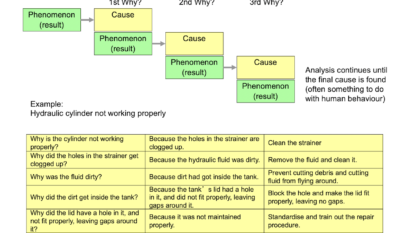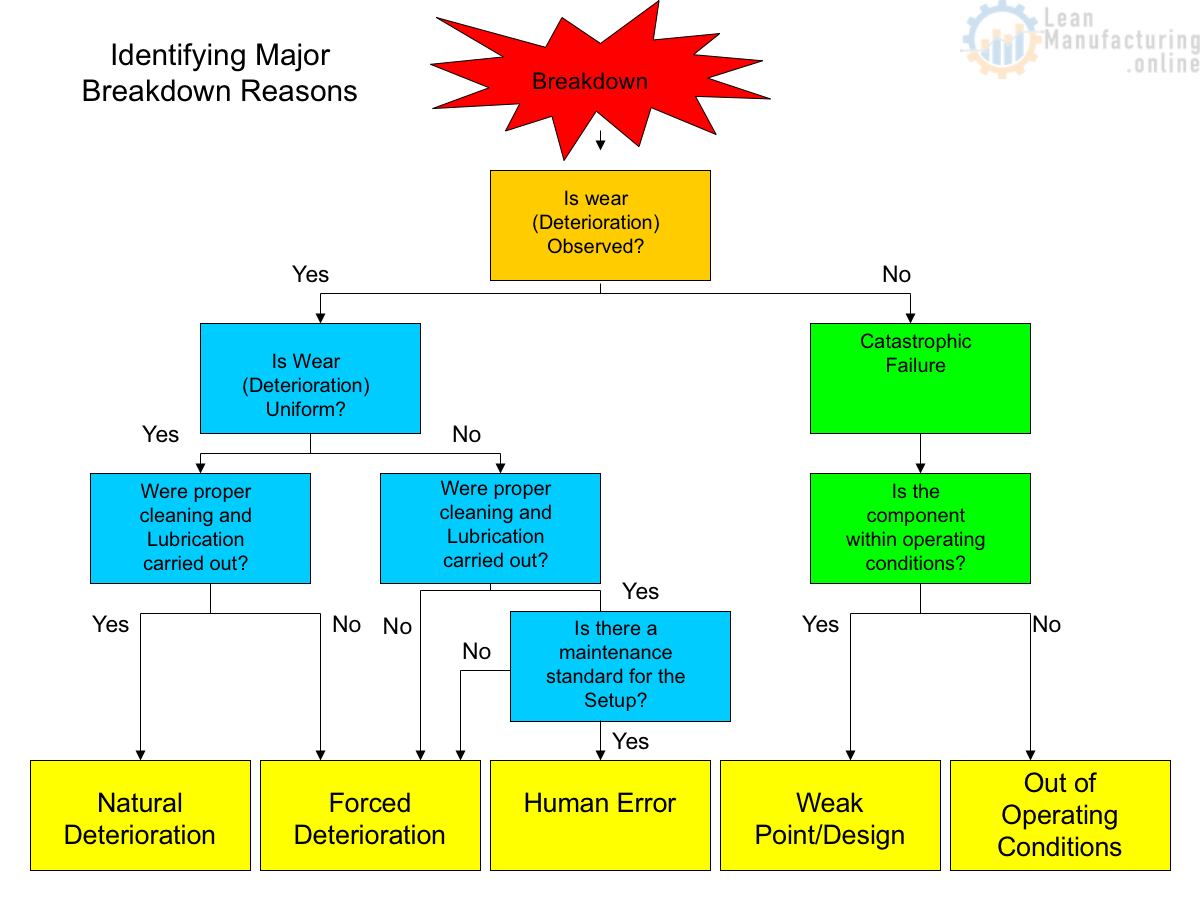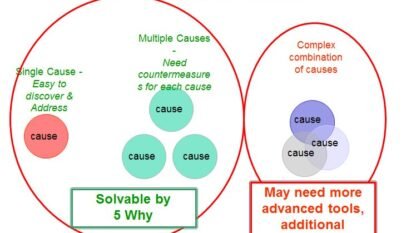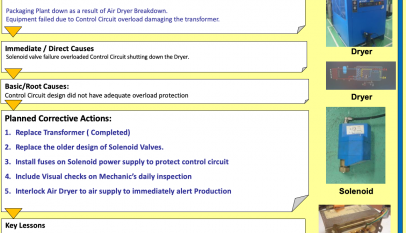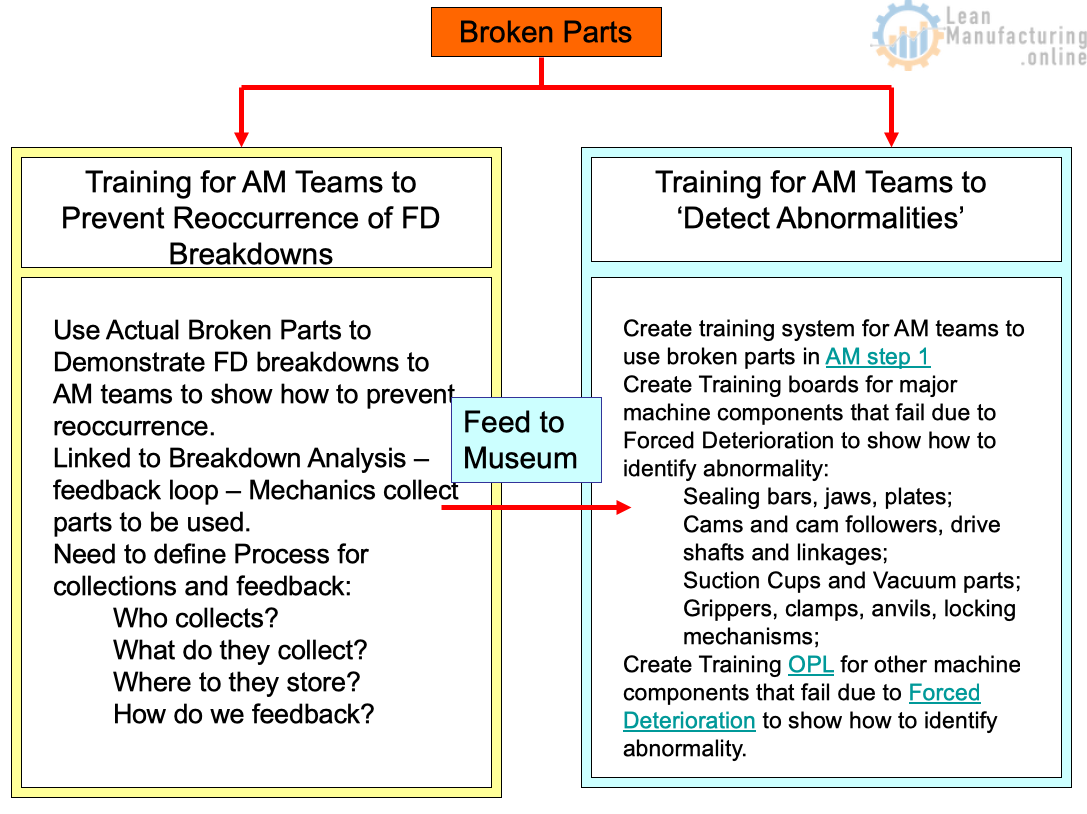Another great tool to create short but meaningful communication is Lessons Learnt. It can be used to communicate Safety, Quality or Productivity issues to all Team Members. Goal is to explain what happened and how to avoid it from happening in the future.

Principles applied are to:
- Take the one page format as the basis;
- Ensure the communication is simple, clear and understandable to the target audience;
- Ensure the communication is able to stand and be understood on its own;
- Ensure the communication does not introduce anything new (unless with prior agreement);
- Have a logical progression so the reader gains a quick understanding of the event:
- event Description
- immediate / Direct Causes (critical few)
- basic/ Root Causes (critical few)
- key Lessons from which corrective actions can be taken, where necessary
Next steps after circling Lessons Learnt to the team. Now that the dust has settled we would like you to consider the following:
- How vulnerable are we to this sort of event happening again? Failure of any of our utilities systems will almost always result in chronic service losses.
- Are we confident that other areas aren’t just as vulnerable?
- Have we done a thorough Risk Analysis on all utilities?
- What have we done for each utility to reduce or minimize the risk?
- Do we have contingencies in place if there are any failures?
5W2H
Five W and two H can be used to determine phenomenon of breakdown or incident occurred, example below:
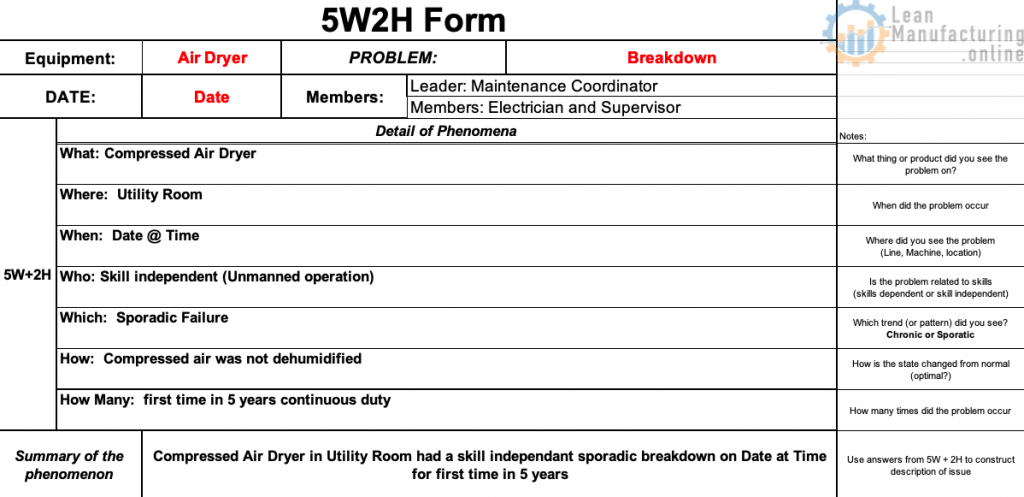
Using phenomenon determined above, use five why analysis to find root cause:

After performing Root Cause Analysis, corrective actions or snag list needs to be implemented to address interim and long term issues:








